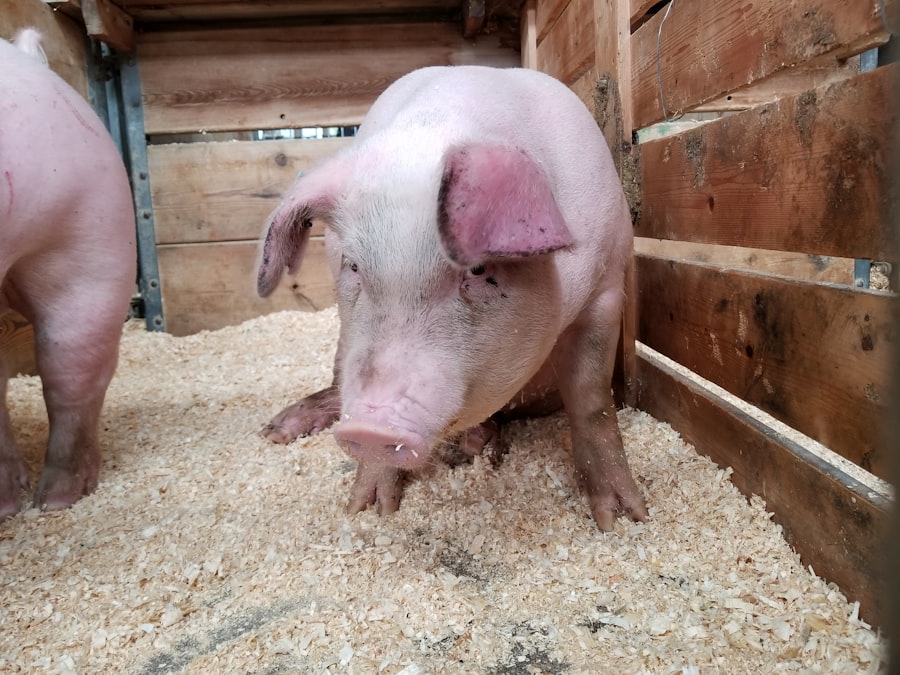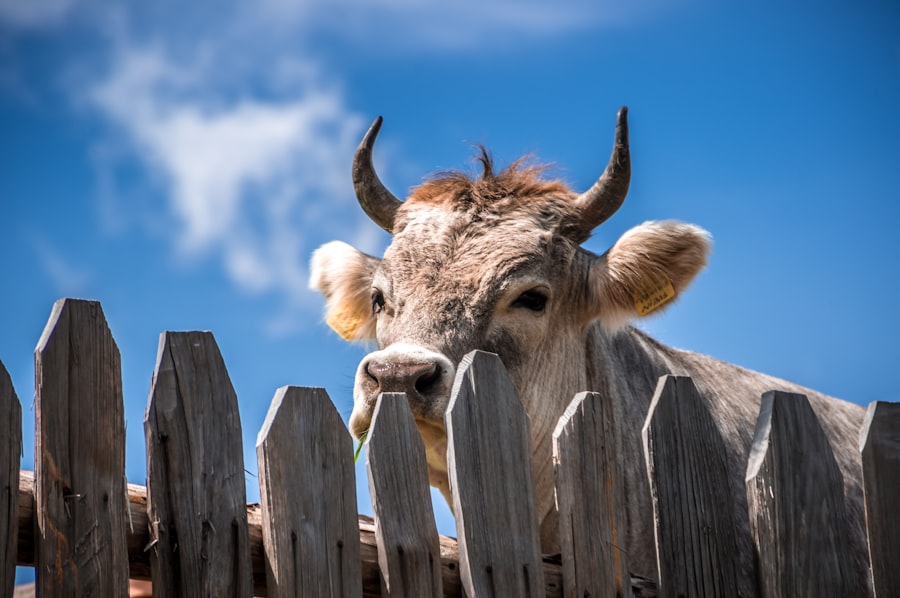Cats and chickens are distinct animals with contrasting behaviors and instincts. Cats are predatory animals with a strong hunting drive, constantly seeking potential prey such as birds and small creatures. They are also territorial and may attempt to establish dominance in their environment.
Chickens, conversely, are social animals that live in flocks with a hierarchical structure known as a pecking order. As prey animals, chickens have a natural instinct to remain vigilant for potential predators. Understanding these fundamental behaviors is essential when considering keeping cats and chickens together.
Cats may view chickens as potential prey, while chickens may perceive cats as predators. This dynamic can lead to conflicts and stress for both animals if not properly managed. By recognizing the natural instincts and behaviors of both species, appropriate measures can be taken to create a harmonious environment.
Cats and chickens employ different methods of communication and interaction. Cats utilize body language, vocalizations, and scent marking to communicate with other animals. Chickens use vocalizations, body language, and pecking to establish their social hierarchy within the flock.
Recognizing these communication methods can help identify signs of stress or aggression in either animal. Awareness of their natural behaviors allows for timely intervention to prevent potential conflicts and ensure the well-being of both cats and chickens in one’s care.
Table of Contents
- 1 Creating a Secure Enclosure for Chickens
- 2 Using Deterrents to Keep Cats Away from Chickens
- 3 Providing Separate Feeding Areas for Cats and Chickens
- 4 Supervising Interactions Between Cats and Chickens
- 5 Training Cats to Respect Boundaries Around Chickens
- 6 Seeking Professional Help for Persistent Issues
- 7 FAQs
Key Takeaways
- Cats and chickens have different behaviors and instincts that need to be understood in order to create a harmonious environment for both animals.
- A secure enclosure is essential for keeping chickens safe from predators, including cats. This can be achieved through proper fencing and covering the coop.
- Deterrents such as motion-activated sprinklers or ultrasonic devices can be used to keep cats away from the chicken enclosure.
- Providing separate feeding areas for cats and chickens can help minimize competition and potential conflicts between the two animals.
- Supervising interactions between cats and chickens is important to ensure the safety of the chickens and to correct any aggressive behavior from the cats.
- Training cats to respect boundaries around the chicken enclosure can be done through positive reinforcement and consistent training methods.
- If persistent issues arise with the interactions between cats and chickens, seeking professional help from a veterinarian or animal behaviorist is recommended.
Creating a Secure Enclosure for Chickens
Designing a Secure Enclosure
When designing a chicken enclosure, several factors must be considered. The size of the enclosure should allow your chickens to move around freely, stretch their wings, and engage in natural behaviors such as dust bathing and foraging. It should also provide protection from the elements, including shelter from sun, rain, and wind.
Materials and Security Measures
The materials used for the enclosure should be sturdy and predator-proof. Wire mesh fencing with small gaps is an excellent option to prevent cats from entering. Additionally, the enclosure should have a secure door or gate that can be locked to prevent unauthorized access. Other security measures, such as installing motion-activated lights or alarms, can also be implemented to deter potential predators, including cats.
A Safe and Comfortable Environment
By creating a secure enclosure for your chickens, you can provide them with a safe and comfortable environment while minimizing the risk of conflicts with cats. This allows your chickens to thrive and live a happy, healthy life.
Using Deterrents to Keep Cats Away from Chickens

Deterrents can be an effective way to keep cats away from chickens and prevent potential conflicts between the two animals. There are several types of deterrents that can be used to discourage cats from entering the chicken enclosure or approaching the chicken coop. These include natural deterrents, such as citrus peels or coffee grounds, which cats dislike the smell of, as well as commercial deterrents such as motion-activated sprinklers or ultrasonic devices.
Natural deterrents can be placed around the perimeter of the chicken enclosure or coop to create a barrier that cats are less likely to cross. Citrus peels or coffee grounds can be scattered around the area to create an unpleasant scent for cats, deterring them from approaching. Additionally, planting cat-repelling plants such as lavender or coleus can help keep cats at bay.
Commercial deterrents such as motion-activated sprinklers or ultrasonic devices can also be effective in keeping cats away from chickens. Motion-activated sprinklers will startle cats with a sudden burst of water when they approach the chicken enclosure, while ultrasonic devices emit high-frequency sounds that are unpleasant for cats but inaudible to humans. These deterrents can be placed strategically around the chicken enclosure to create a barrier that discourages cats from entering.
By using deterrents to keep cats away from chickens, you can minimize the risk of potential conflicts between the two animals while providing a safe and secure environment for your chickens to thrive.
Providing Separate Feeding Areas for Cats and Chickens
Providing separate feeding areas for cats and chickens is essential for ensuring that both animals have access to their own food without competition or conflict. Cats are obligate carnivores and require a diet high in animal protein, while chickens are omnivores that require a balanced diet of grains, seeds, fruits, and vegetables. By providing separate feeding areas for both animals, you can ensure that each animal receives the appropriate nutrition without interference from the other.
For cats, it’s important to provide a consistent feeding schedule with high-quality cat food that meets their nutritional needs. This can be done by feeding cats indoors or in a separate area away from the chicken enclosure to prevent them from accessing the chicken feed. Additionally, providing fresh water at all times is essential for keeping cats hydrated and healthy.
For chickens, it’s important to provide access to a balanced diet of poultry feed, grains, seeds, fruits, and vegetables in a separate feeding area within their enclosure. This can be done by using feeders designed specifically for chickens that are elevated off the ground to prevent access by cats or other potential predators. Additionally, providing access to clean water at all times is essential for keeping chickens healthy and hydrated.
By providing separate feeding areas for cats and chickens, you can ensure that both animals receive the appropriate nutrition without competition or conflict. This will help minimize potential conflicts between the two animals while promoting their health and well-being.
Supervising Interactions Between Cats and Chickens
Supervising interactions between cats and chickens is crucial for ensuring the safety and well-being of both animals. Even if you have taken proactive steps to create a secure environment for your chickens and deter cats from approaching, it’s important to monitor their interactions closely to prevent potential conflicts or stress for either animal. When introducing cats to chickens or allowing them to coexist in the same space, it’s important to observe their behavior and body language closely.
Signs of stress or aggression in either animal should be addressed immediately to prevent potential conflicts. Additionally, it’s important to intervene if you notice any signs of predatory behavior in cats or signs of fear or distress in chickens. Supervising interactions between cats and chickens also allows you to establish boundaries and reinforce positive behaviors.
By rewarding calm and non-threatening behavior in both animals, you can help them learn to coexist peacefully. Additionally, providing enrichment activities such as toys or treats for both cats and chickens can help redirect their focus and reduce potential conflicts. By supervising interactions between cats and chickens, you can ensure the safety and well-being of both animals while promoting a harmonious environment for them to coexist.
Training Cats to Respect Boundaries Around Chickens

Understanding the Importance of Boundary Setting
Training cats to respect boundaries around chickens is a crucial step in preventing potential conflicts between the two animals. Cats are intelligent animals that can be trained using positive reinforcement techniques to respect boundaries and coexist peacefully with other animals.
Effective Training Methods
One effective training method is to use a clicker or verbal cue paired with a reward such as treats or playtime when your cat stays away from the chicken enclosure or shows calm behavior around the chickens. By consistently rewarding this behavior, you can help your cat learn to associate staying away from the chickens with positive experiences. Additionally, providing enrichment activities such as interactive toys or puzzle feeders can help redirect your cat’s focus away from the chickens.
Consistency and Patience are Key
It’s important to be patient and consistent when training your cat to respect boundaries around chickens. Training takes time and repetition, so it’s important to be persistent and reward positive behavior consistently. By using positive reinforcement techniques, you can help your cat learn to coexist peacefully with chickens while minimizing potential conflicts between the two animals.
Seeking Professional Help for Persistent Issues
If you are experiencing persistent issues with keeping cats and chickens together despite taking proactive measures, seeking professional help may be necessary. A professional animal behaviorist or trainer with experience working with cats and chickens can provide valuable insight and guidance on how to address specific issues and create a harmonious environment for both animals. A professional animal behaviorist can assess the behavior of both cats and chickens in your care and provide personalized recommendations for managing their interactions.
They can also provide guidance on training techniques and behavior modification strategies tailored to your specific situation. Additionally, they can help you identify potential stressors or triggers that may be contributing to conflicts between cats and chickens. In some cases, seeking professional help may also involve consulting with a veterinarian to rule out any underlying health issues that may be contributing to behavioral problems in either animal.
A veterinarian can provide valuable insight into the health and well-being of both cats and chickens and recommend any necessary medical interventions or treatments. By seeking professional help for persistent issues with keeping cats and chickens together, you can gain valuable support and guidance in creating a harmonious environment for both animals while addressing specific challenges or concerns that may arise. Professional assistance can help you develop effective strategies for managing their interactions while promoting their safety and well-being.
If you’re looking for more tips on keeping chickens safe, you might want to check out this article on where to put your chicken coop. It offers valuable advice on the best location for your coop to ensure the safety and well-being of your chickens.
FAQs
What are some effective ways to keep cats away from chickens?
Some effective ways to keep cats away from chickens include installing a fence around the chicken coop, using motion-activated sprinklers or lights, and keeping the chicken feed and water out of reach of cats.
Why do cats pose a threat to chickens?
Cats pose a threat to chickens because they are natural hunters and may see chickens as prey. They can also cause stress to the chickens, which can affect their egg production and overall well-being.
Are there any natural deterrents to keep cats away from chickens?
Yes, there are natural deterrents to keep cats away from chickens, such as planting cat-repelling plants like lavender, rue, or pennyroyal around the chicken coop. Citrus peels and coffee grounds can also be effective in deterring cats.
What should I do if I spot a cat near my chicken coop?
If you spot a cat near your chicken coop, you can try to scare it away by making loud noises or using a water hose. It’s important to also secure the coop and make sure there are no entry points for the cat to get in.
Can I train my cat to not bother the chickens?
It is possible to train your cat to not bother the chickens, but it may require consistent training and supervision. You can use positive reinforcement to reward the cat for staying away from the chickens and provide alternative sources of entertainment for the cat.
Meet Walter, the feathered-friend fanatic of Florida! Nestled in the sunshine state, Walter struts through life with his feathered companions, clucking his way to happiness. With a coop that’s fancier than a five-star hotel, he’s the Don Juan of the chicken world. When he’s not teaching his hens to do the cha-cha, you’ll find him in a heated debate with his prized rooster, Sir Clucks-a-Lot. Walter’s poultry passion is no yolk; he’s the sunny-side-up guy you never knew you needed in your flock of friends!







